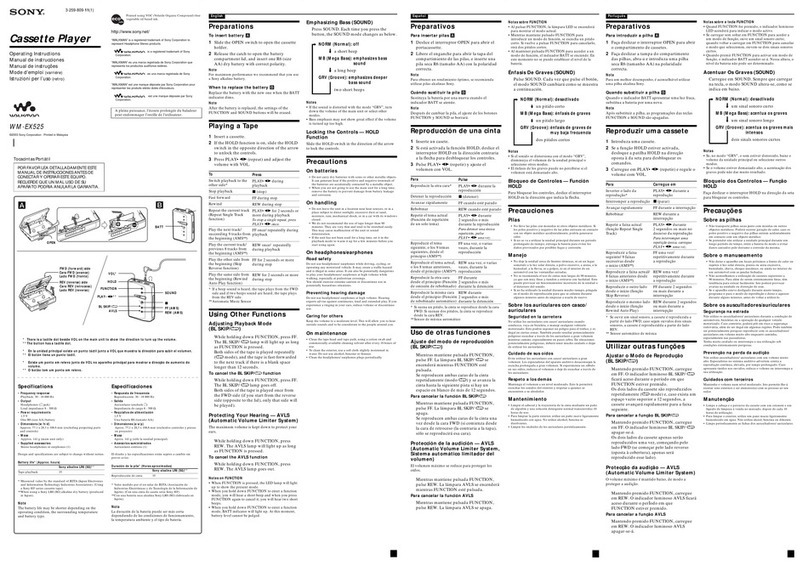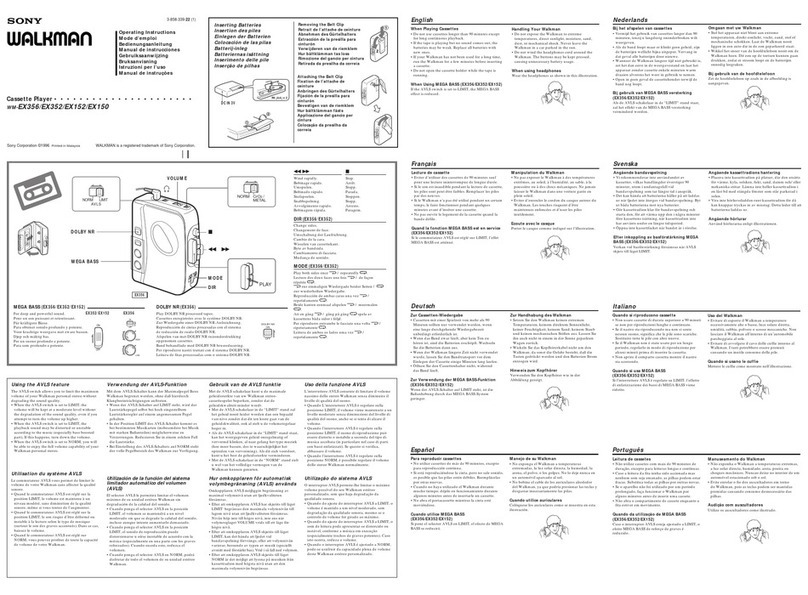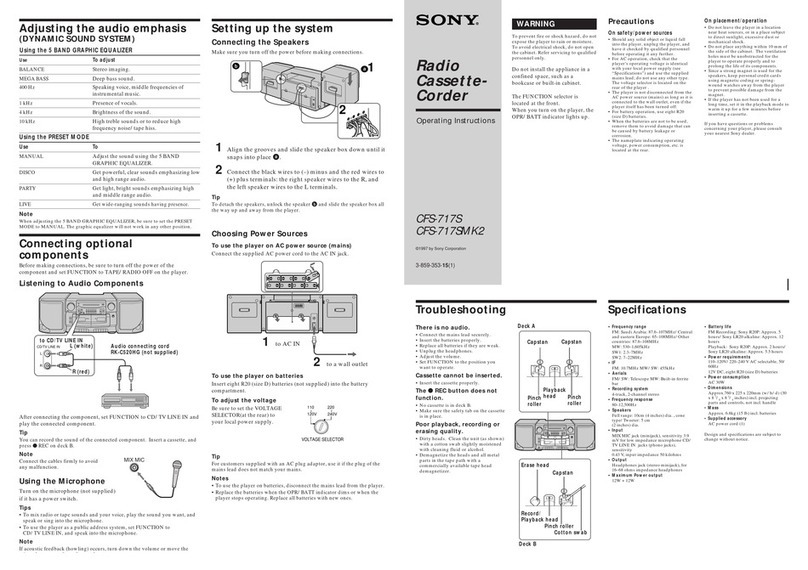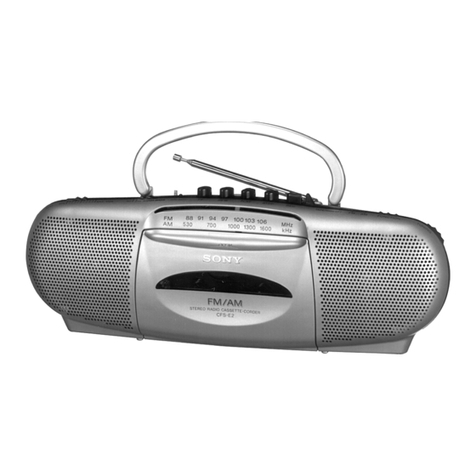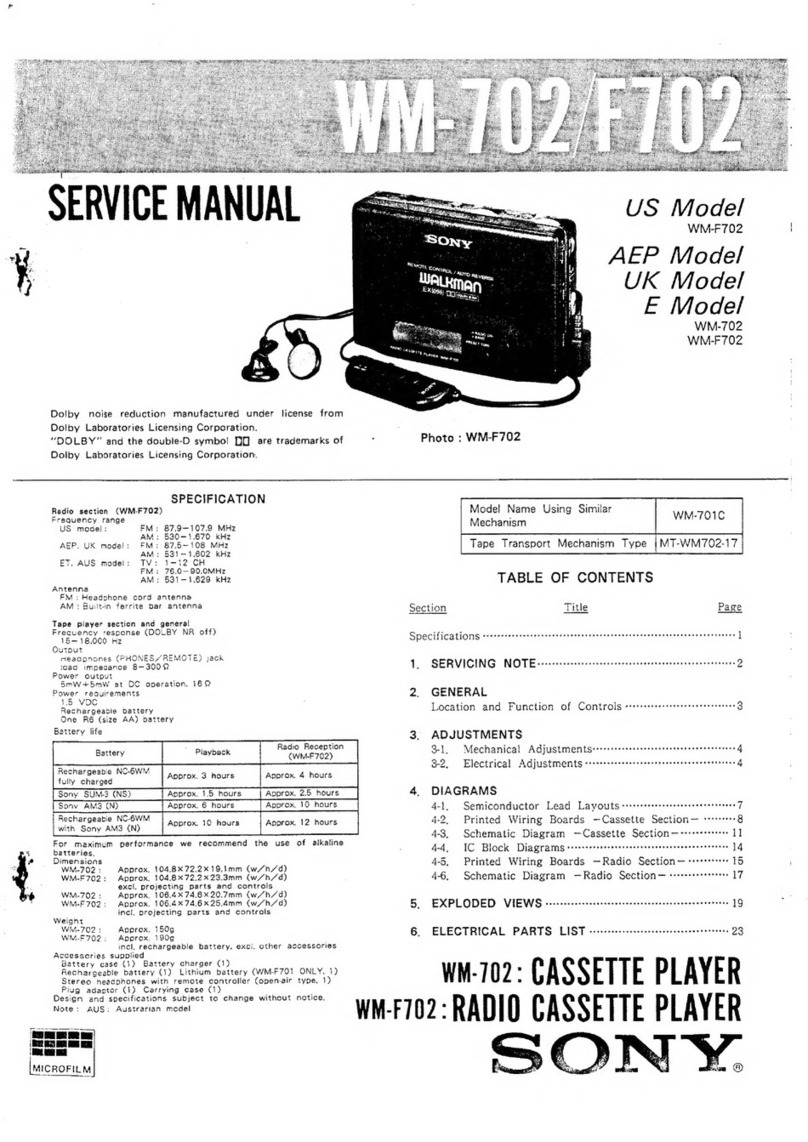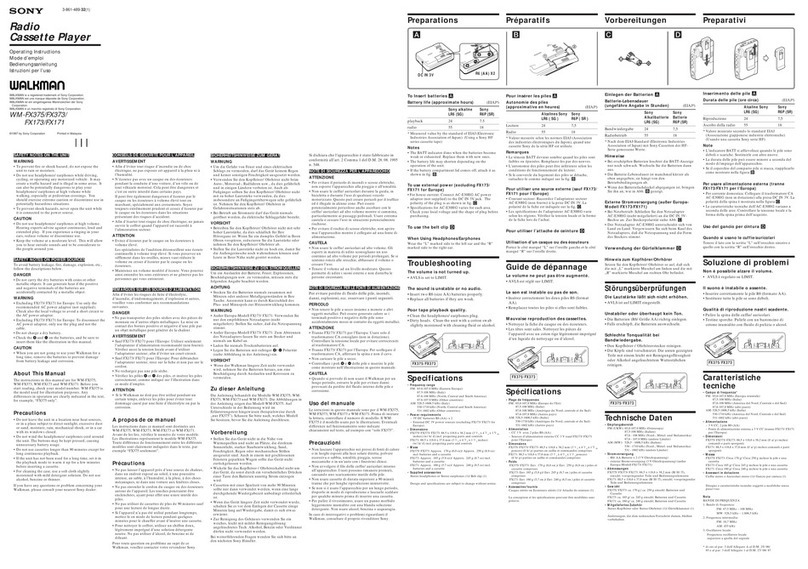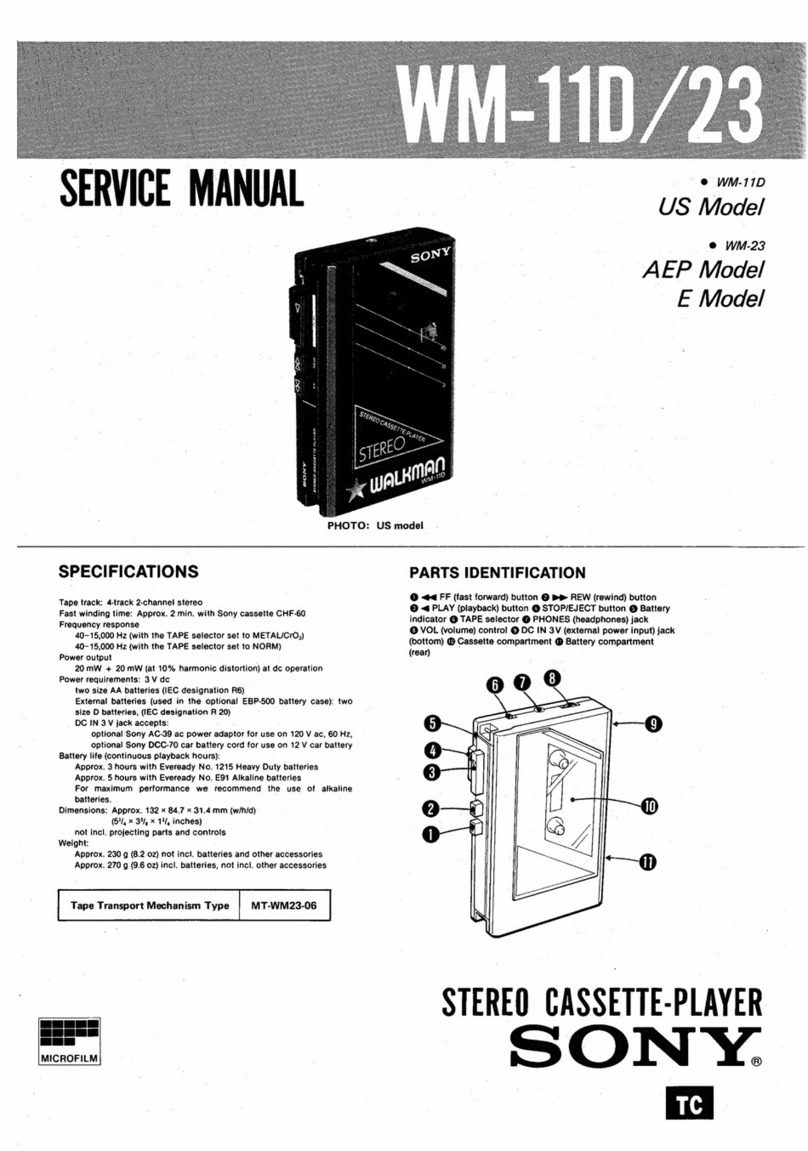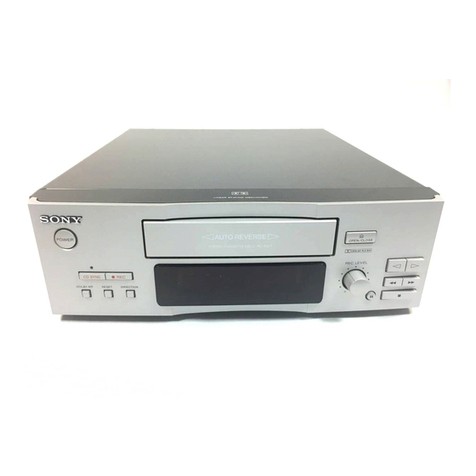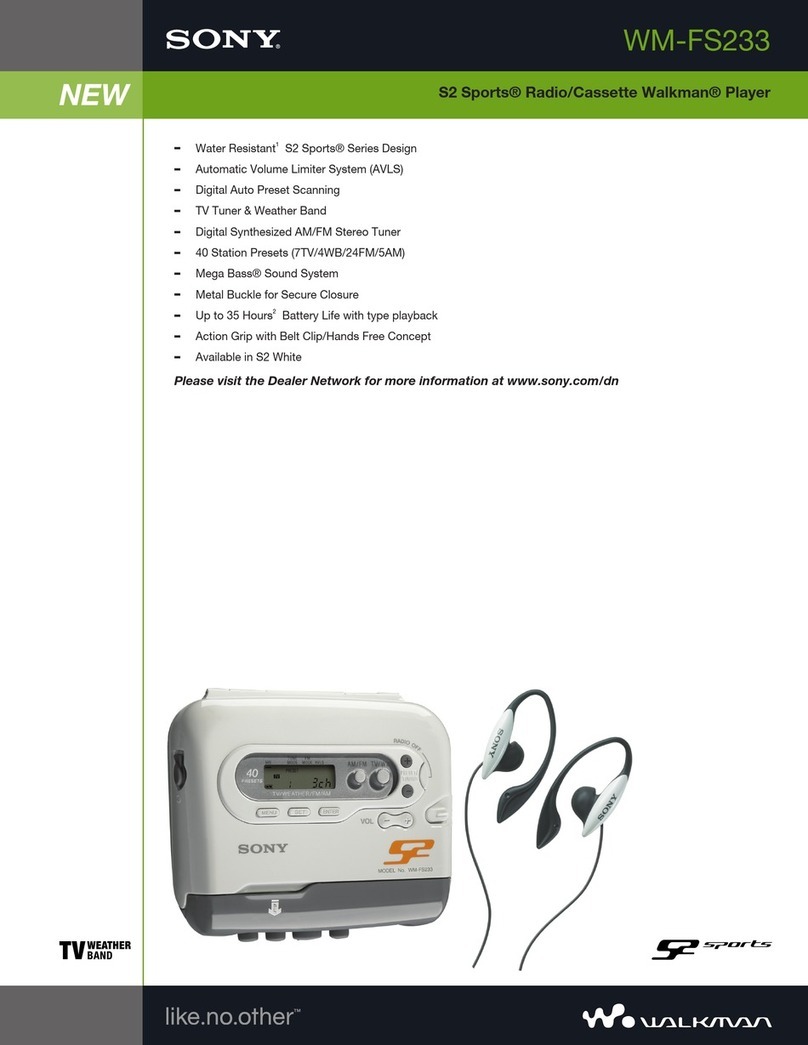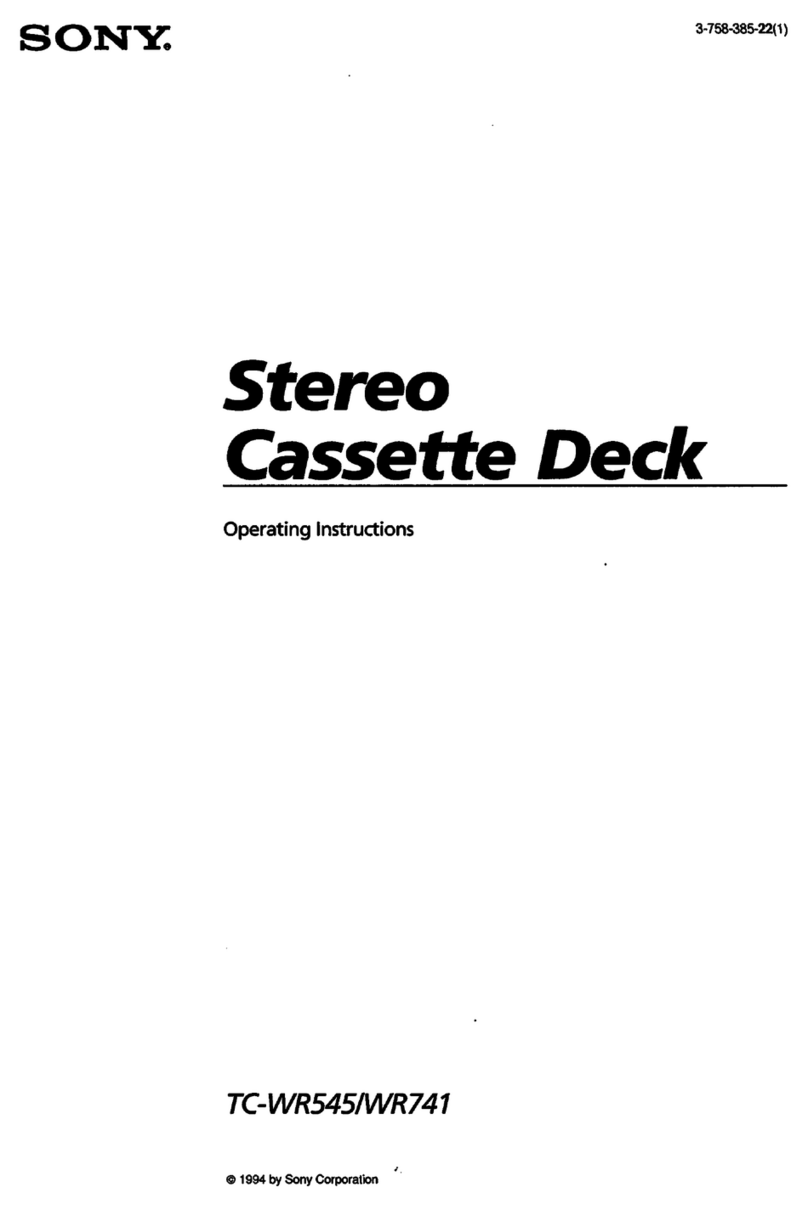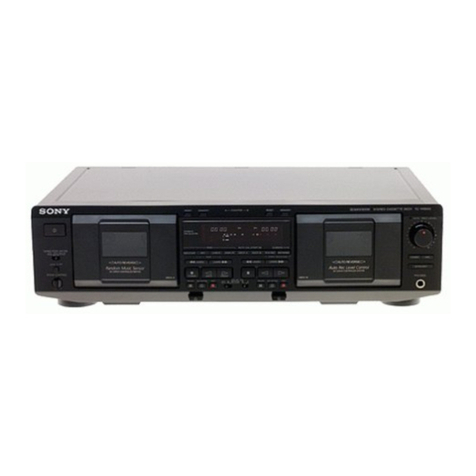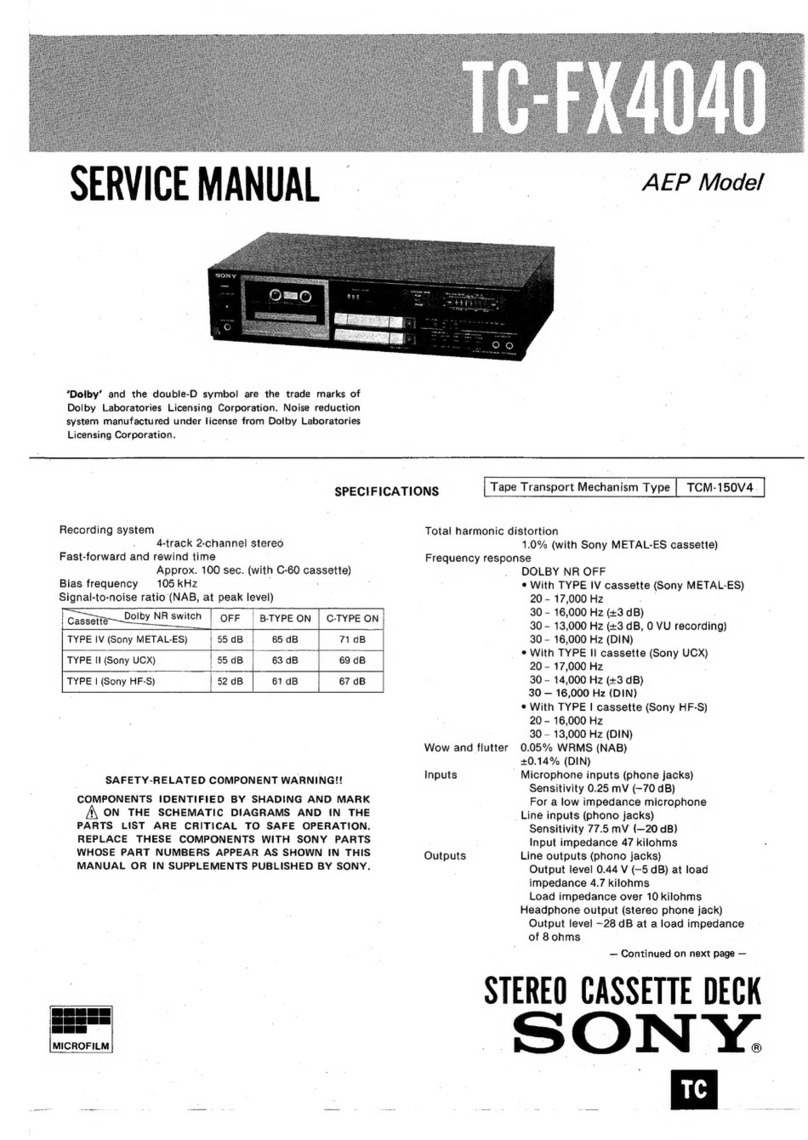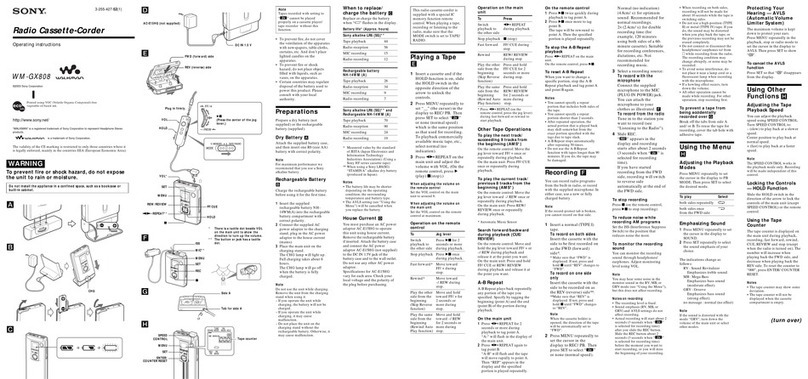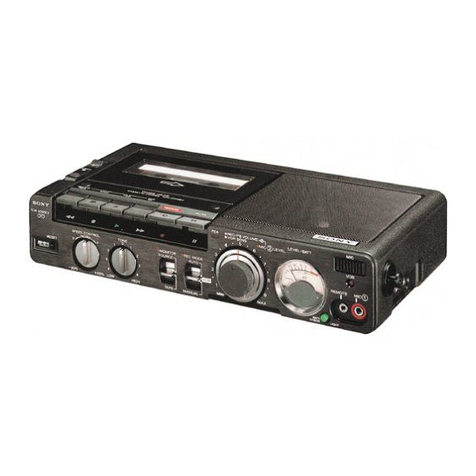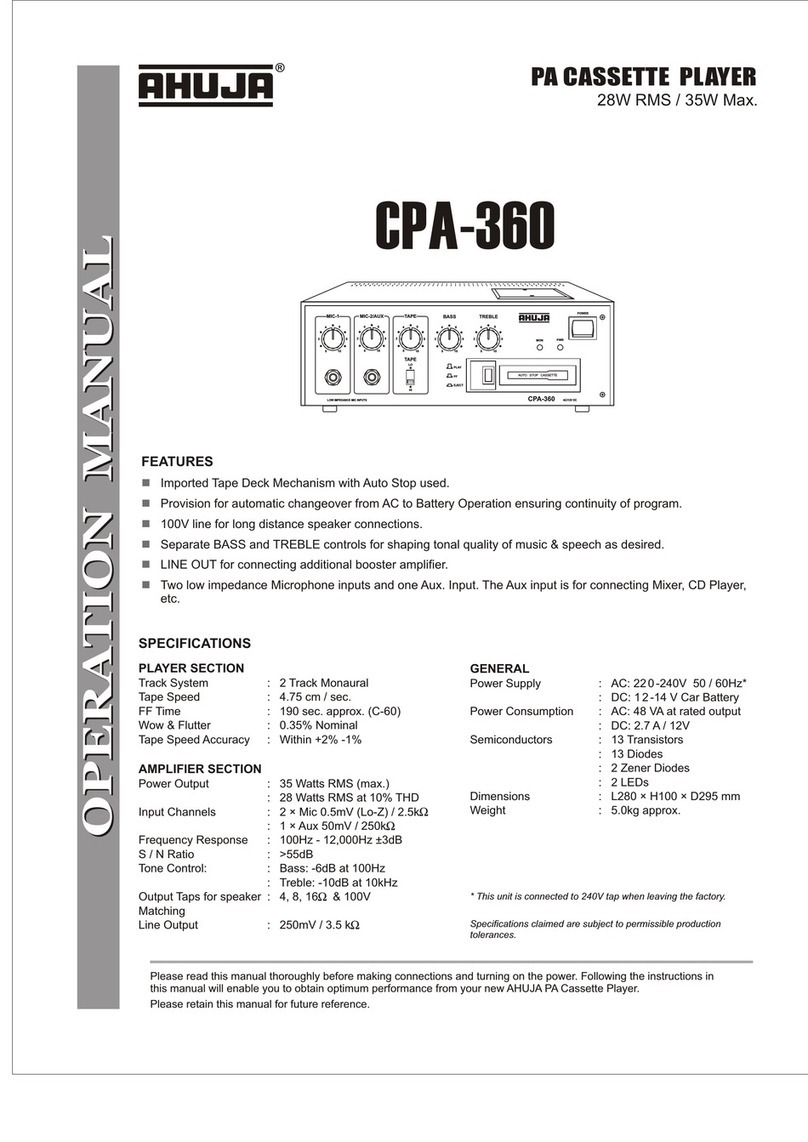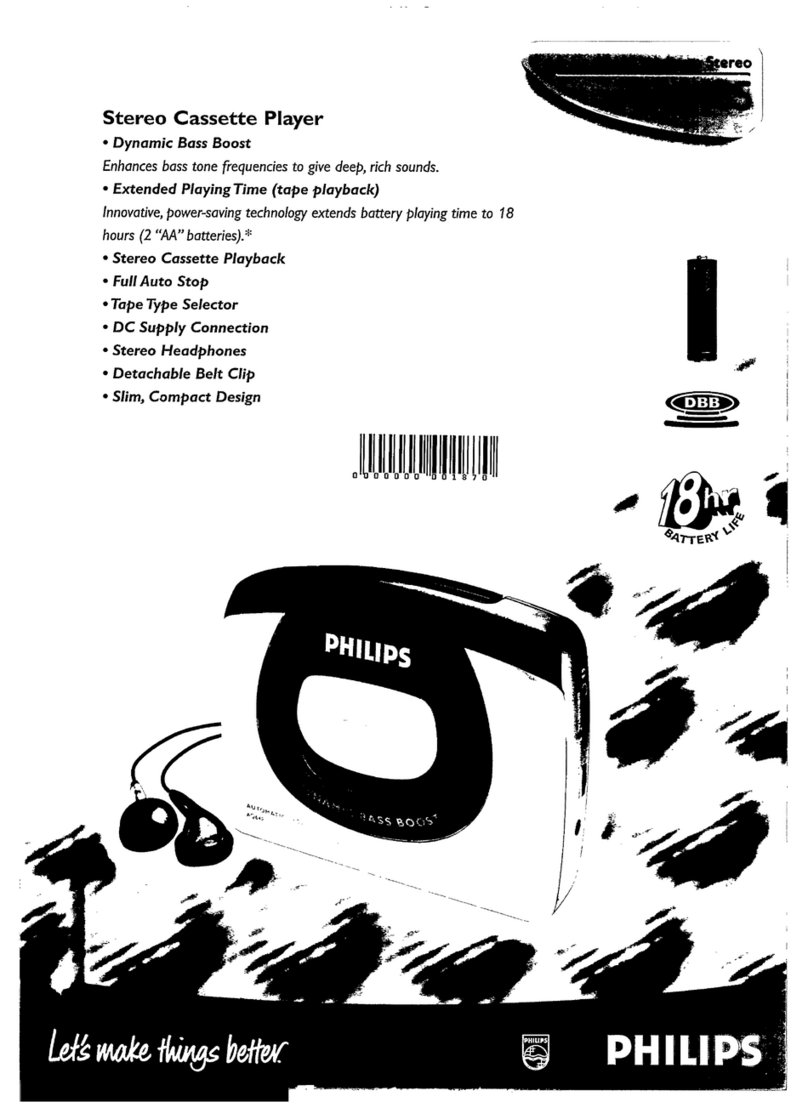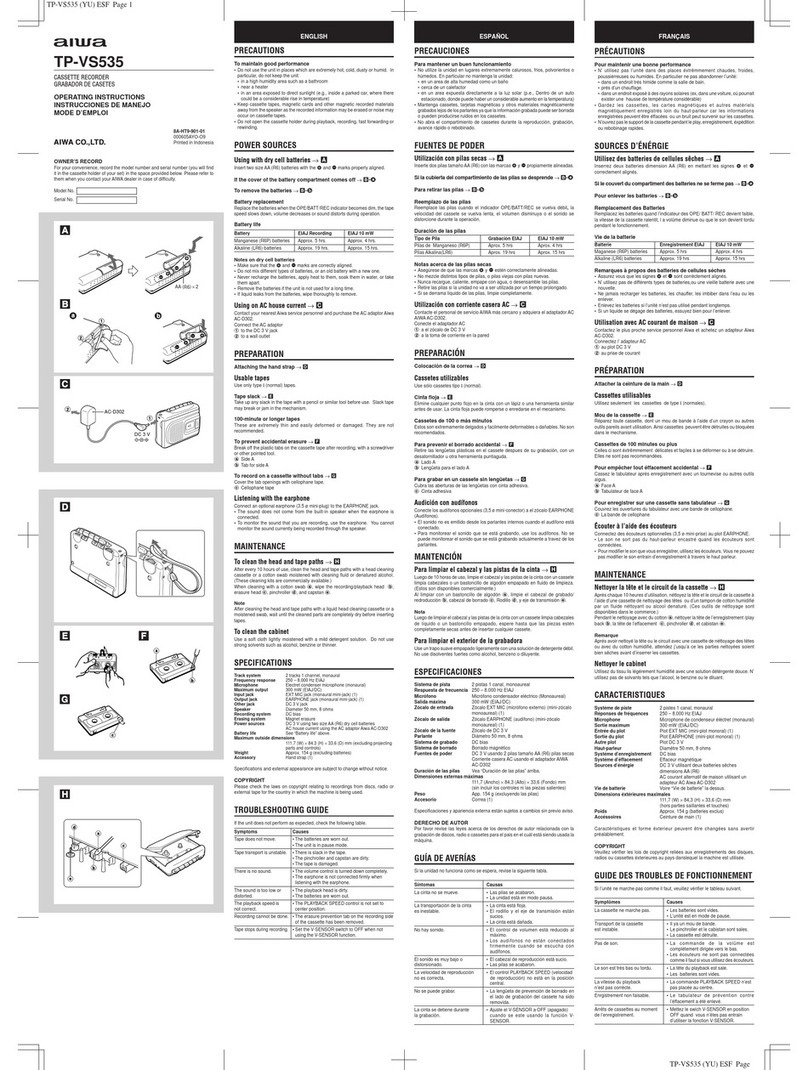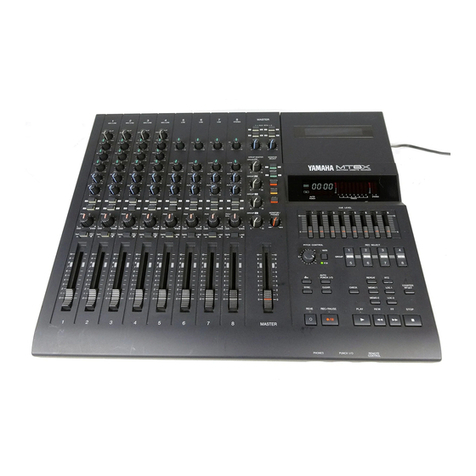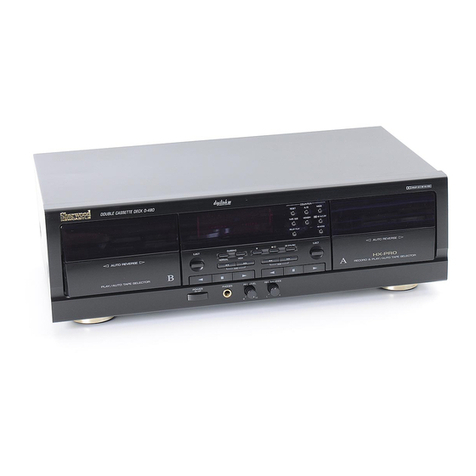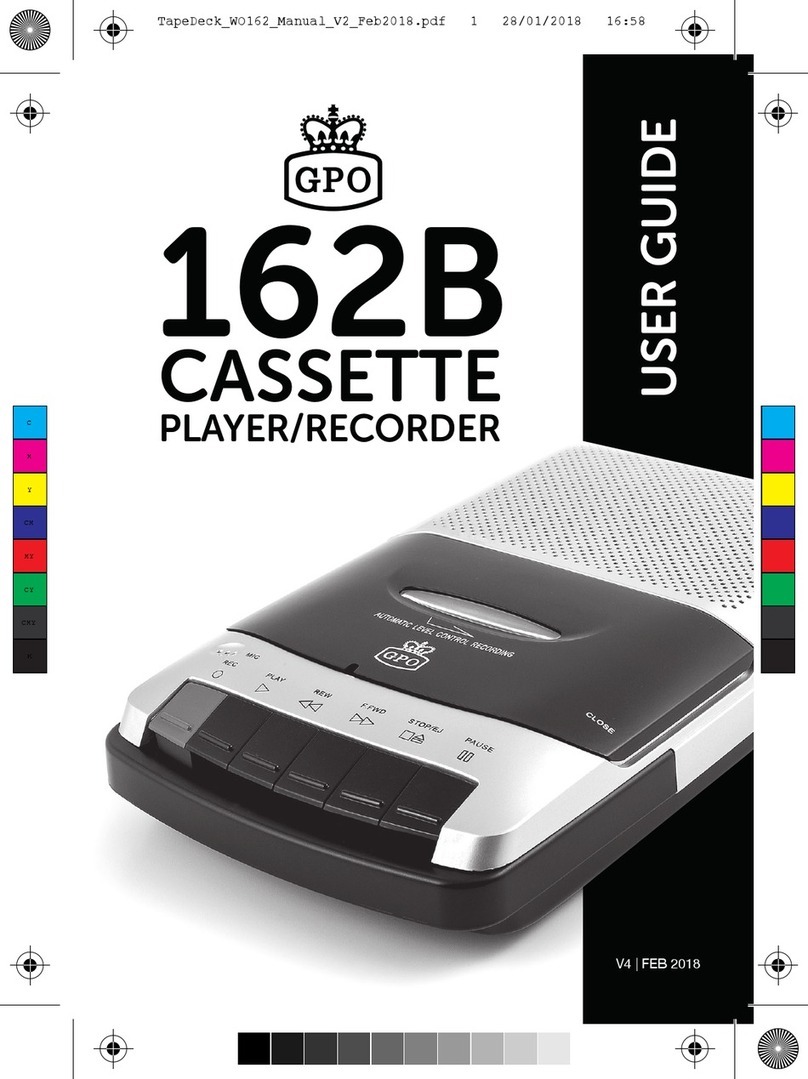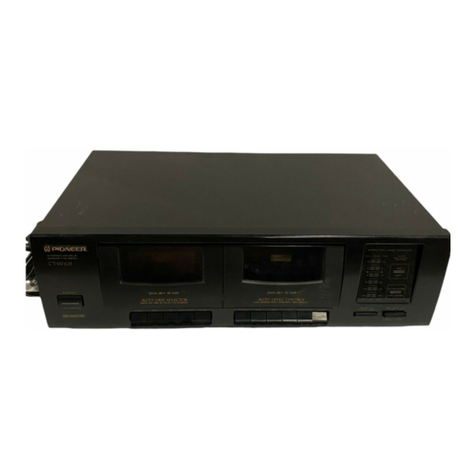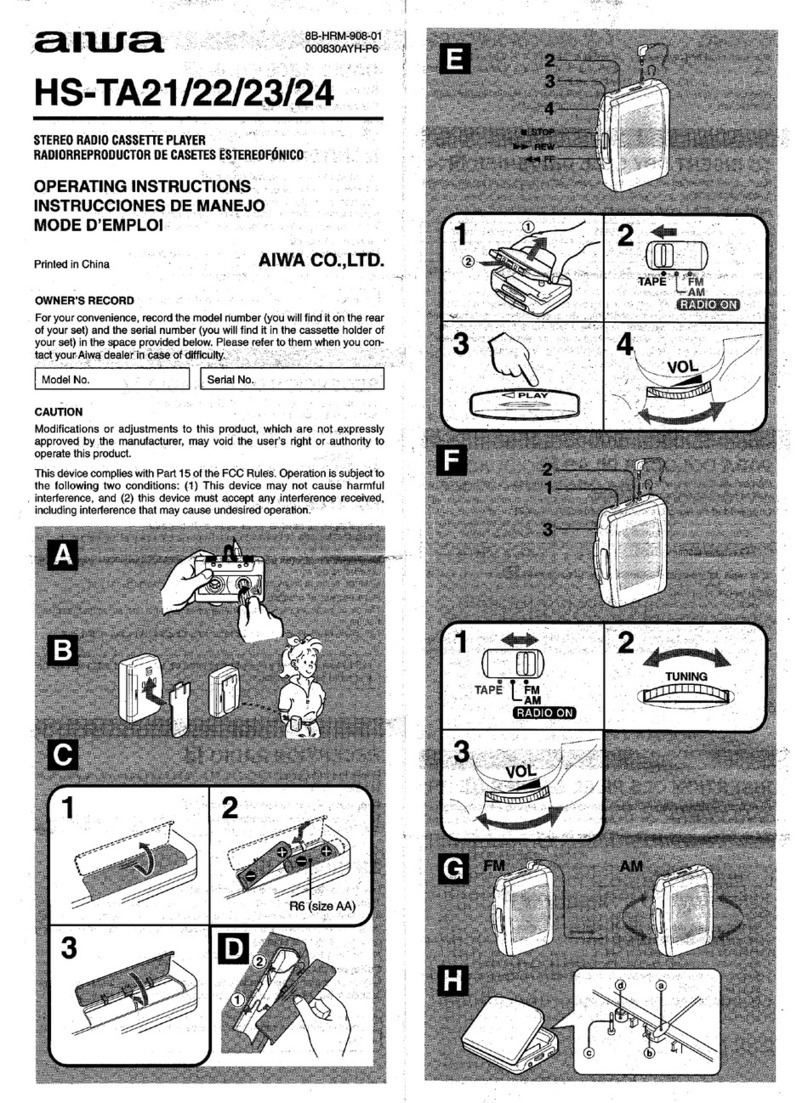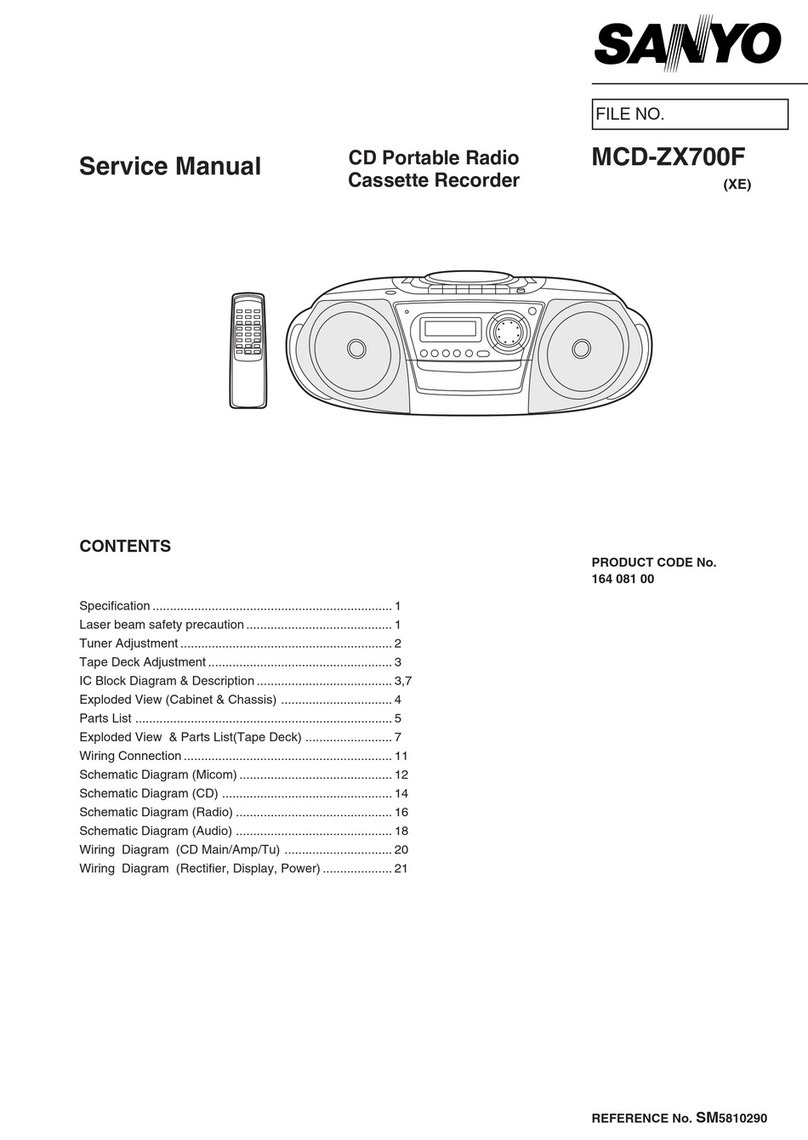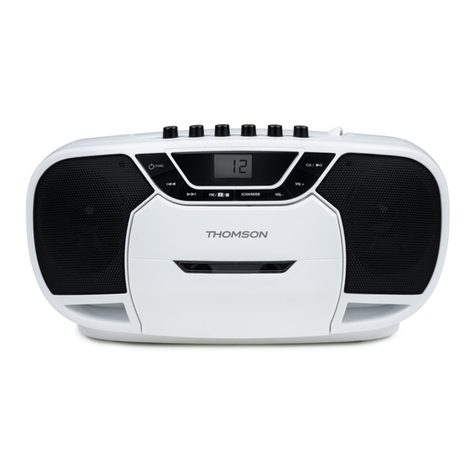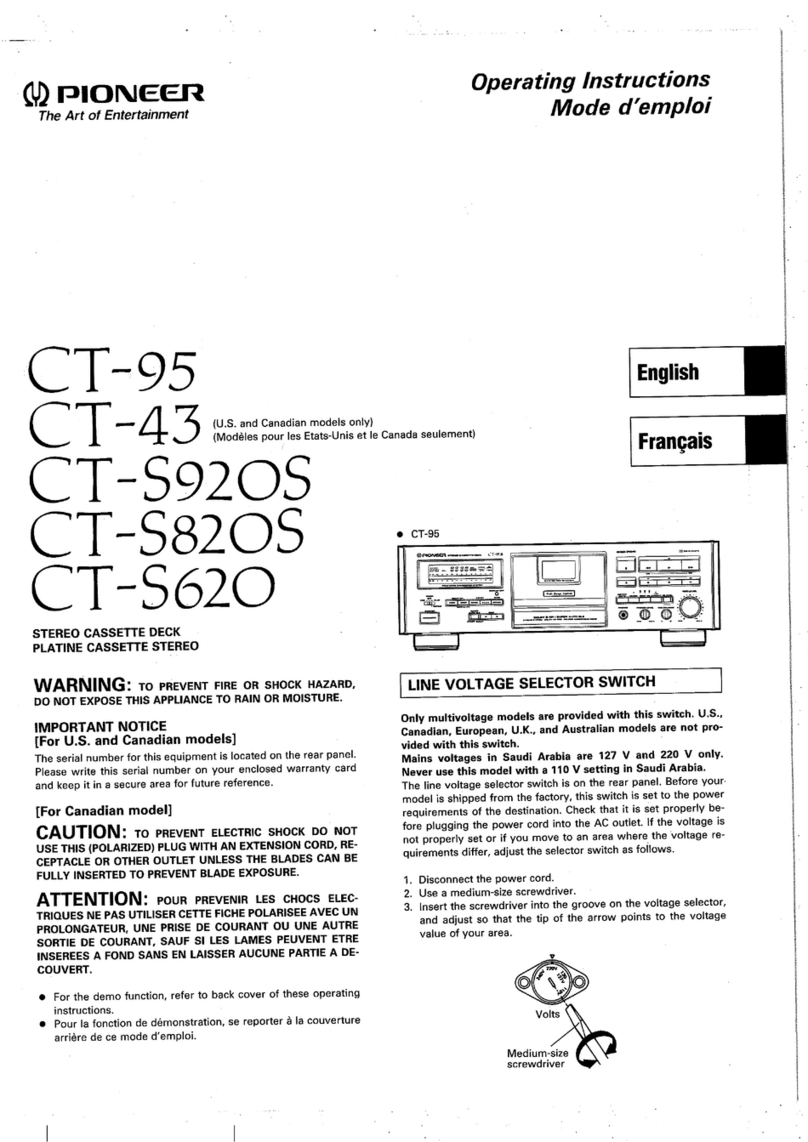2
General
Speaker
Full range: 10 cm dia.,
4 Ω, cone type (2)
Power output
2.0 W + 2.0 W (at 4 Ω, 10%
harmonic distortion)
Power requirements
For CD stereo radio cassette recorder:
US, CND, TW model:
120 V AC, 60 Hz
E4 model
200 - 240 VAC, 50/60 Hz
E15 model
220 - 240 VAC, 50/60 Hz
AEP, UK,AUS, SP model:
230 V AC, 50 Hz
KR model:
220 V AC, 60 Hz
9 V DC, 6 size D (R20) batteries
For remote control:
3 V DC, 2 size AA (R6) batteries
Power consumption
AC 10 W
Battery life
For CD stereo radio cassette recorder:
FM recording
Sony R20P: approx. 13.5 h
Sony alkaline LR20: approx. 24 h
Tape playback
Sony R20P: approx. 7.5 h
Sony alkaline LR20: approx. 15 h
CD playback
Sony R20P: approx. 2.5 h
Sony alkaline LR20: approx. 7 h
Dimensions
Approx. 390 ×170 ×259.5 mm (w/h/d)
(15 3/8 ×6 3/4 ×10 1/4 inches) (incl. projecting parts)
MassApprox. 4 kg (8 lb. 13 oz.) (incl. batteries)
Supplied accessories
AC power cord (1)
Remote control (RM-Z1S002) (1)
Design and specifications are subject to change without
notice.
CSD-MP100
SAFETY-RELATED COMPONENT WARNING!!
COMPONENTS IDENTIFIED BY MARK 0OR DOTTED LINE
WITH MARK 0ON THE SCHEMATIC DIAGRAMS AND IN
THE PARTS LIST ARE CRITICAL TO SAFE OPERATION.
REPLACE THESE COMPONENTS WITH SONY PARTS WHOSE
PART NUMBERS APPEAR AS SHOWN IN THIS MANUAL OR
IN SUPPLEMENTS PUBLISHED BY SONY.
CAUTION
Use of controls or adjustments or performance of proce-
dures other than those specified herein may result in haz-
ardous radiation exposure.
Flexible Circuit Board Repairing
•Keep the temperature of the soldering iron around 270˚C during
repairing.
•Do not touch the soldering iron on the same conductor of the
circuit board (within 3 times).
•Be careful not to apply force on the conductor when soldering
or unsoldering.
Notes on Chip Component Replacement
•Never reuse a disconnected chip component.
•Notice that the minus side of a tantalum capacitor may be dam-
aged by heat.
NOTES ON HANDLING THE OPTICAL PICK-UP BLOCK
OR BASE UNIT
The laser diode in the optical pick-up block may suffer electrostatic
breakdown because of the potential difference generated by the
charged electrostatic load, etc. on clothing and the human body.
During repair, pay attention to electrostatic breakdown and also use
the procedure in the printed matter which is included in the repair
parts.
The flexible board is easily damaged and should be handled with
care.
NOTES ON LASER DIODE EMISSION CHECK
The laser beam on this model is concentrated so as to be focused on
the disc reflective surface by the objective lens in the optical pick-
up block. Therefore, when checking the laser diode emission,
observe from more than 30 cm away from the objective lens.
ATTENTION AU COMPOSANT AYANT RAPPORT
À LA SÉCURITÉ!!
LES COMPOSANTS IDENTIFIÉS PAR UNE MARQUE 0SUR LES
DIAGRAMMESSCHÉMATIQUESET LALISTE DES PIÈCESSONT
CRITIQUES POUR LA SÉCURITÉ DE FONCTIONNEMENT. NE
REMPLACER CES COMPOSANTS QUE PAR DES PIÈCES SONY
DONT LES NUMÉROS SONT DONNÉS DANS CE MANUEL OU
DANS LES SUPPLÉMENTS PUBLIÉS PAR SONY.
•Abbreviation
CND : Canadian model
E4 : AC 200-240V area in E model
E15 : AC 220-240V area in E model
TW : Taiwan model
AUS:Australian model
SP : Singapore model
KR : Korean model
This Compact Disc player is classified as a CLASS 1
LASER product.
The CLASS 1 LASER PRODUCT mark is located at the
bottom.
CLASS 1 LASER PRODUCT
LUOKAN 1 LASER LAITE
KLASS 1 LASER APPARAT
AEP, UK, E, AUS model


